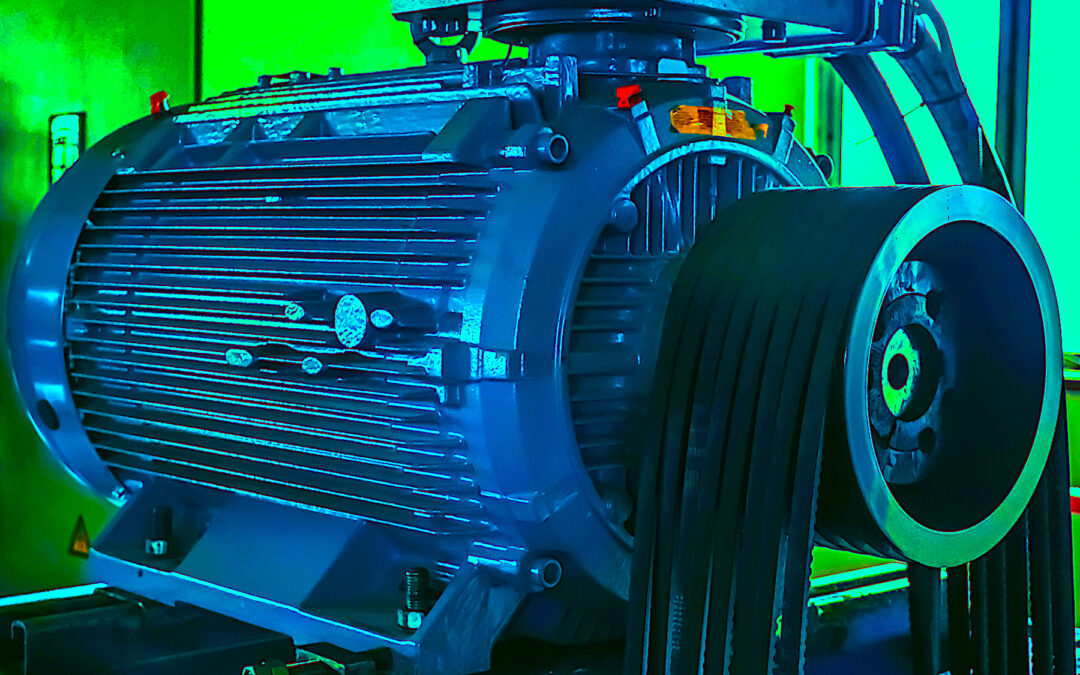
by Howard Penrose, Ph.D., CMRP | Sep 17, 2020 | Electrical Reliability, Motors & Drives
In this week’s article on Electrical Signature Analysis (ESA), we discuss the issue of a 1X rpm current reading when dealing with belted applications. For this example, the motor is a 15 hp, 1765 rpm, 460 Vac, 18 Amp unit with 40 rotor bars (RB) and 48 stator...

by Howard Penrose, Ph.D., CMRP | Sep 11, 2020 | Electrical Reliability, Motors & Drives
While sometimes referred to as Motor Current Signature Analysis (MCSA), which involves collection of motor current data only, Electrical Signature Analysis (ESA) utilizes both voltage and current data. This includes values, phase impedance, power harmonics, and other...

by Howard Penrose, Ph.D., CMRP | Sep 4, 2020 | Electrical Reliability, Motors & Drives
Rotor-bar failures are not common in properly applied systems. In this short case study, we follow a 4000-hp motor without starting restrictions to rotor bar failure. Lessons learned include demonstration of the fact that load does not impact the relative...

by Howard Penrose, Ph.D., CMRP | Aug 28, 2020 | Electrical Reliability, Motors & Drives
Material wear is a primary cause of degradation of electric machines and driven equipment or powertrain. Wear is caused by either normal operation or abnormal conditions and is also dependent upon the type of equipment and application. The impact of wear in electric...

by Howard Penrose, Ph.D., CMRP | Aug 22, 2020 | Electrical Reliability, Motors & Drives
Let’s start this particular article by looking back at a bit of history. The original concept behind Electrical Signature Analysis (ESA) is based upon the ability to perform voltage signature analysis and Motor Current Signature Analysis (MCSA), with the...

by Howard Penrose, Ph.D., CMRP | Aug 7, 2020 | Electrical Reliability, Motors & Drives
In this week’s article, we’ll discuss insulation systems in more detail and the various high-potential (Hi-Pot) testing types and uses for evaluating electric-motor insulation to ground systems. The use of Hi-Pot testing has been around for over a century,...

by Howard Penrose, Ph.D., CMRP | Jul 25, 2020 | Electrical Reliability, Motors & Drives
The standards working group behind the present edition of IEEE Std 43 made substantial changes in the overall standard, including modifications to temperature normalization to 40 C. This was done to accommodate the many changes and observations in insulation chemistry...

by Howard Penrose, Ph.D., CMRP | Jul 10, 2020 | Electrical Reliability, Motors & Drives
As discussed in the July 3, 2020, installment of this ongoing series the insulation-to-ground tester, or Meg-Ohm meter, was also one of the earliest instruments used by technicians to evaluate and troubleshoot insulation systems. That includes...

by Howard Penrose, Ph.D., CMRP | Jul 3, 2020 | Electrical Reliability, Motors & Drives
This article is part of a continuing series that began with discussions of IEEE and EPRI large-electric-motor studies and what those studies considered “excellent maintenance.” At this point, the series has moved beyond the emphasis on large motors and,...

by Howard Penrose, Ph.D., CMRP | Jun 19, 2020 | Electrical Reliability, Motors & Drives
When reviewing the IEEE and EPRI large electric motor studies on which this ongoing article series has focused, and looking at what those studies considered as “excellent maintenance,” a number of concerns surfaced. Among them was the fact that many...













